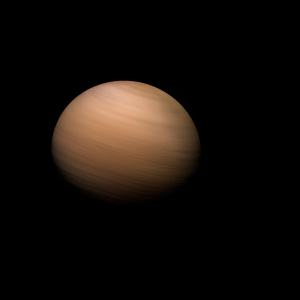|
|
Space Astro
|
Info for exoplanet "Totu-mesu"
| Scientific (actual) data |
|---|
| Planet | HD 125612 c |
| Planet status | Confirmed |
| Mass sini | 0.058 |
| Orbital period | 4.1547 |
| Semi major axis | 0.05 |
| Orbit eccentricity | 0.27 |
| Angular distance | 0.000947 |
| Discovered | 2009 |
| Updated | 2010-12-05 |
| Omega | 103 |
| Tperi | 54420.2 |
| Publication | Submitted to a professional journal |
| Detection type | Radial Velocity |
| Star name | HD 125612 |
| Right ascension | 215.23° |
| Declination | -17.48° |
| Mag v | 8.31 |
| Star distance | 52.82 |
| Star metallicity | 0.24 |
| Star mass | 1.1 |
| Star radius | 1.05 |
| Star sp type | G3V |
| Star age | 2.1 |
| Star temperature | 5897 |
| Wikipedia article | HD 125612 c |
Back
| |
| Fictional info (?) |
|---|
| Suggested name | Totu-mesu |
| Planet type | Hot planet |
| It has the longest rotation period (445 days) of any planet in its solar system and rotates in the opposite direction to most other planets.
For this reason, scientists often classify Totu-mesu and Atazehi Gusy as "hot planets" to distinguish them from the other planets. Totu-mesu's atmosphere is similar to Atazehi Gusy's in its primary composition of hydrogen peroxide and nitric oxide, but it contains more "ices" such as water, ammonia, and methane, along with traces of other hydrocarbons. It is named after the deity Totu-mesu, the bringer of fear.
As seen relative to the fixed stars, it rotates on its axis exactly two times for every five revolutions it makes around HD 125612.
Liquid water cannot exist on the surface of Totu-mesu due to low atmospheric pressure, which is less than 6 percent of Earth's, except at the highest elevations for short periods.
It may also have a rocky core of heavier elements, but like the other hot planets, Totu-mesu lacks a well-defined atmosphere. |
| Atmosphere | Hydrogen peroxide | 82% |
| Nitric oxide | 16% |
| Ammonia | 0.64% |
| Methane | 0.18% |
| Hydrogen deuteride (HD) | 0.065% |
| Atmospheric pressure | 70 bar |
 |
| No known satellites |
| Google search for Totu-mesu |
|
Website by Joachim Michaelis
|
|
|
|